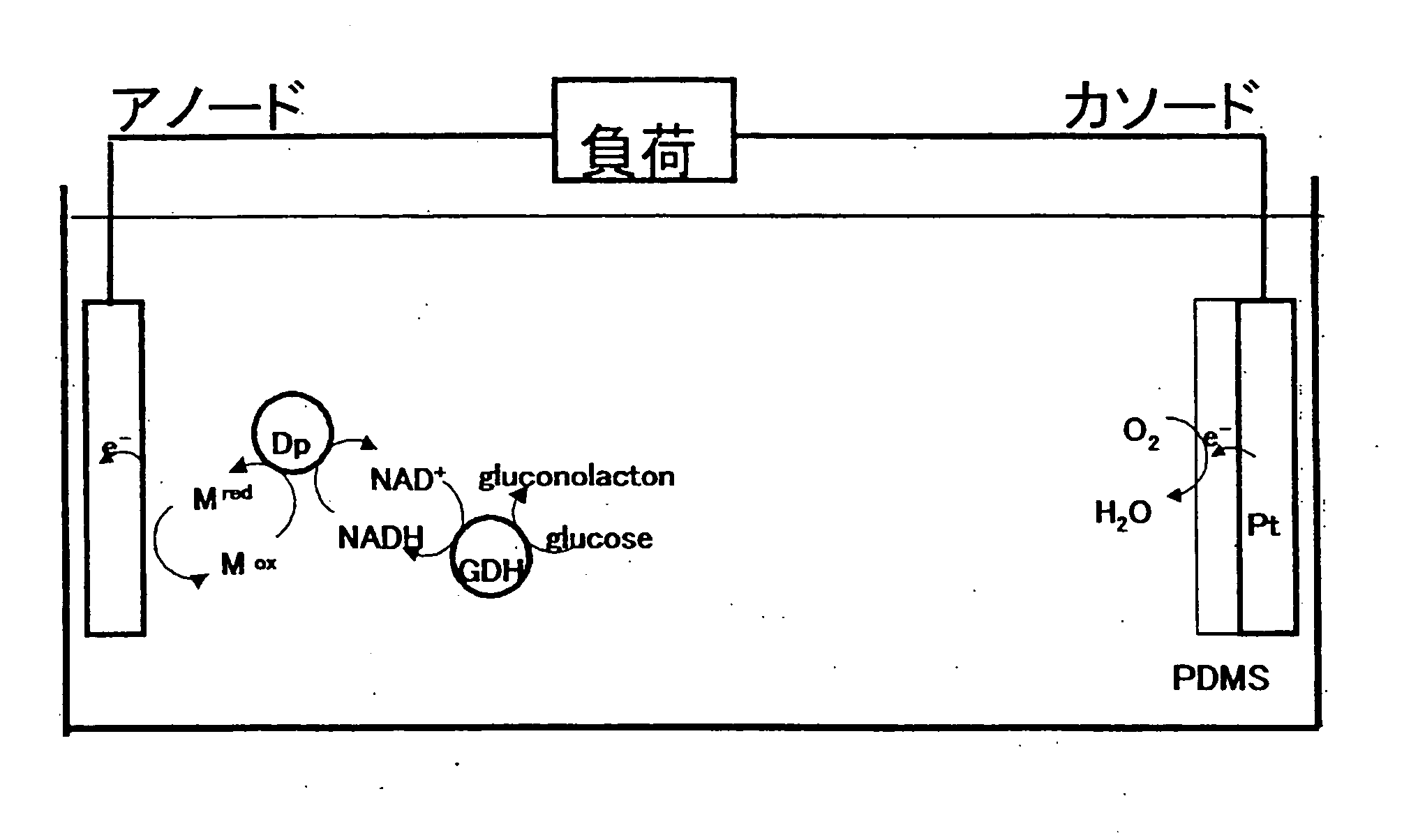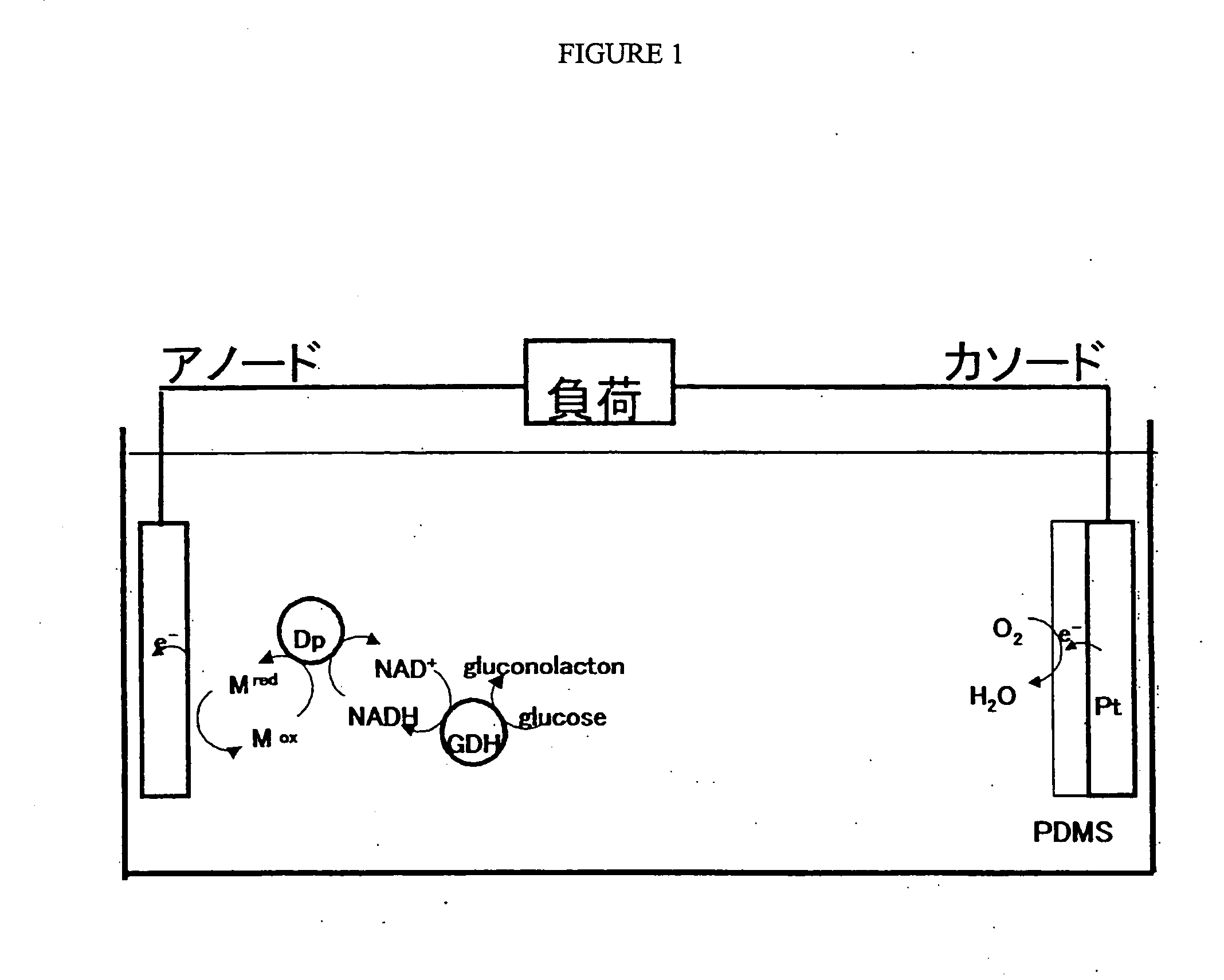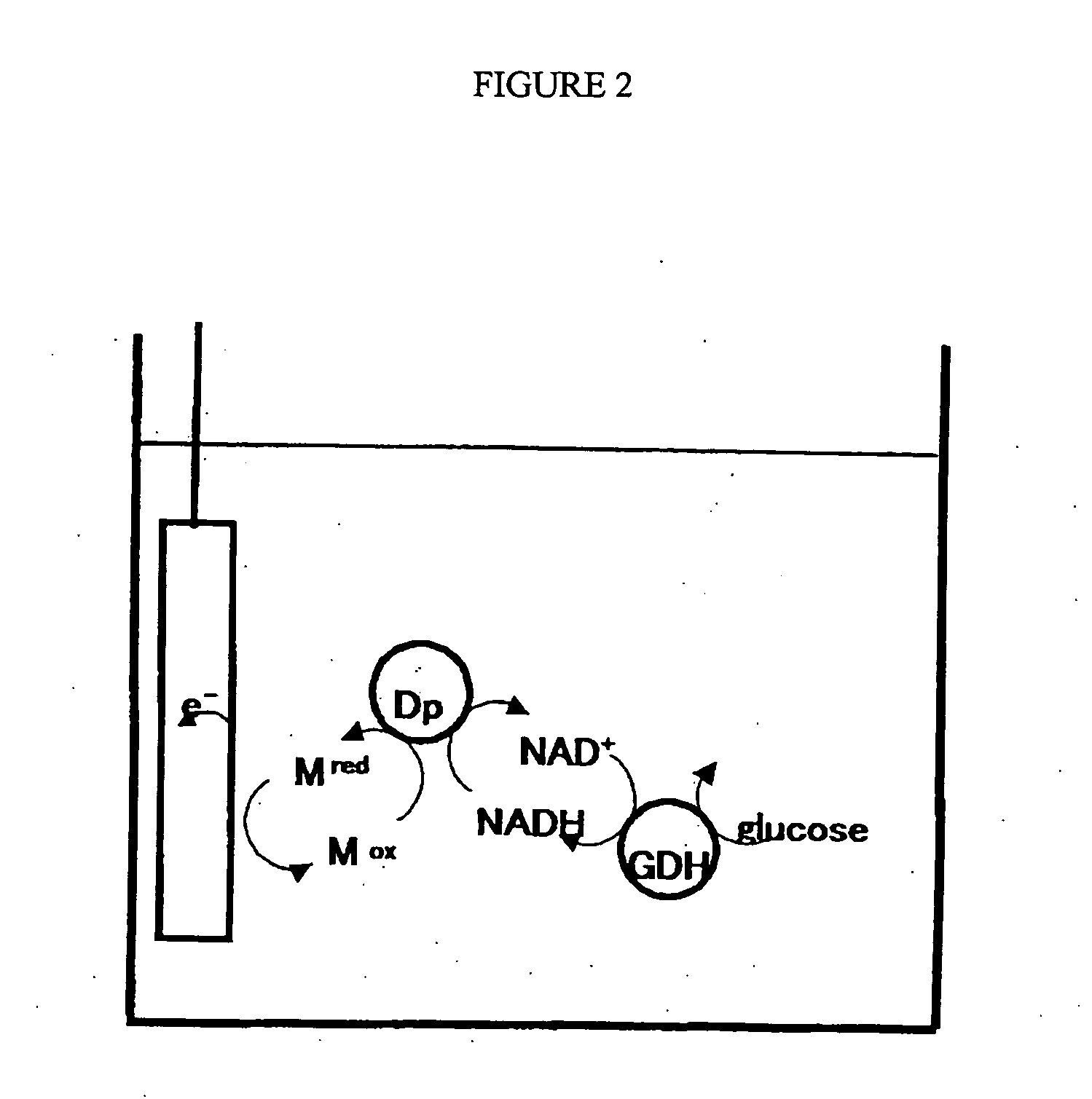Electron mediator, electron mediator immobilized electrode, and biofuel cell using the electrode
a technology of electron mediator and electrode, which is applied in the direction of immobilizing enzymes, fuel cells, diaphragms, etc., can solve the problems of complex operation, mediators with safety and cost problems, and inability to oxidize glucose electrolyte, etc., to achieve high fuel utilization rate, easy and strong immobilization, and high efficiency
- Summary
- Abstract
- Description
- Claims
- Application Information
AI Technical Summary
Benefits of technology
Problems solved by technology
Method used
Image
Examples
example 1
Various mediators were evaluated through CV and reaction rate kinetic analysis.
(1) Cyclic Voltammetry (CV)
A potentiostat mode of Hokuto Denko HZ-3000 was used. A glassy carbon electrode (GDE, electrode area of about 0.083 cm2) was used as a working electrode. The GDE was polished with an aluminum powder of 0.05 μm and subjected to ultrasonic cleaning in deionized water before every measurement. A three electrode cell was used, and a Pt electrode and an Ag|AgCl (saturated KCl) electrode were used as a counter electrode and a reference electrode, respectively for the measurement. A potential was changed at a rate of 5 mV / s. A measurement sample was subjected to sufficient bubbling with N2 gas before the measurement to remove dissolved oxygen, and the N2 gas overflowed during the measurement. All measurements began from an open circuit potential.
FIG. 5 shows cyclic voltammograms of various mediators. FIG. 5 shows the results of VK3 (FIG. 5A), CPVK3 (FIG. 5B), AEACPVK3 (FIG. 5C), ...
example 2
An enzyme and a mediator (AEACPVK3) were immobilized on the anode, and the anode was evaluated by CV and chronopotentiometry.
(1) Immobilization of Enzyme and Mediator on Anode
AEACPVK3, Dp, and GDH, along with a polymer, were immobilized on an electrode using PEGDGE as a crosslinking agent. 7.5 μl of a buffer solution containing 27 units of the Dp (DIAPHORASE I, [EC 1.6.99.-], from Bacillus stearothermophilus, available from Unitika Ltd.), 13 μg of the AEACPVK3, 20 units of the GDH, 75 μg of the PVI, and 595 μg of the PEGDGE were applied onto a glassy carbon electrode having a diameter of 3 mm and cured through a 50-h reaction in a desiccator at 4° C. An immobilized electrode was formed by washing with deionized water slowly and carefully after curing.
PUM
 Login to View More
Login to View More Abstract
Description
Claims
Application Information
 Login to View More
Login to View More - R&D
- Intellectual Property
- Life Sciences
- Materials
- Tech Scout
- Unparalleled Data Quality
- Higher Quality Content
- 60% Fewer Hallucinations
Browse by: Latest US Patents, China's latest patents, Technical Efficacy Thesaurus, Application Domain, Technology Topic, Popular Technical Reports.
© 2025 PatSnap. All rights reserved.Legal|Privacy policy|Modern Slavery Act Transparency Statement|Sitemap|About US| Contact US: help@patsnap.com



